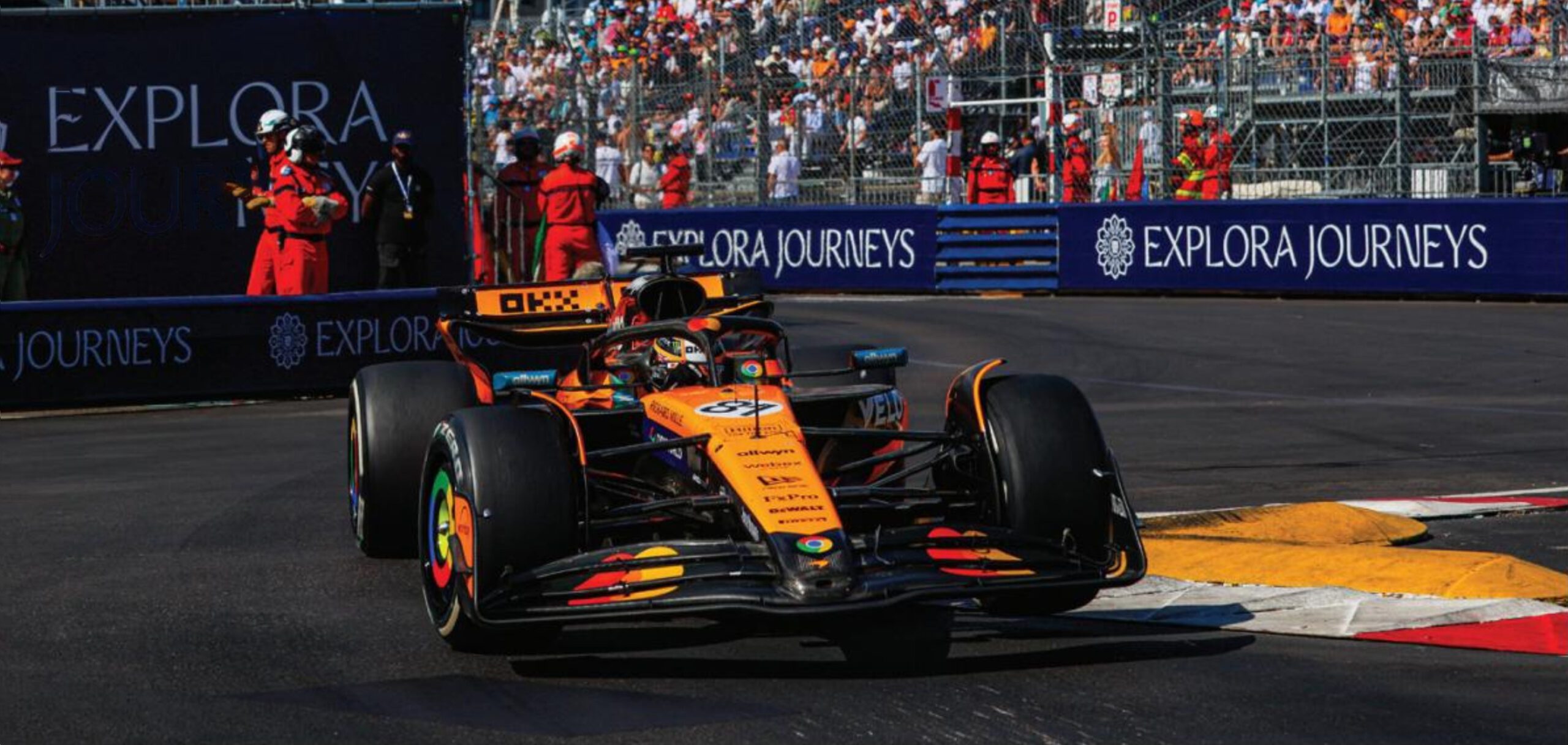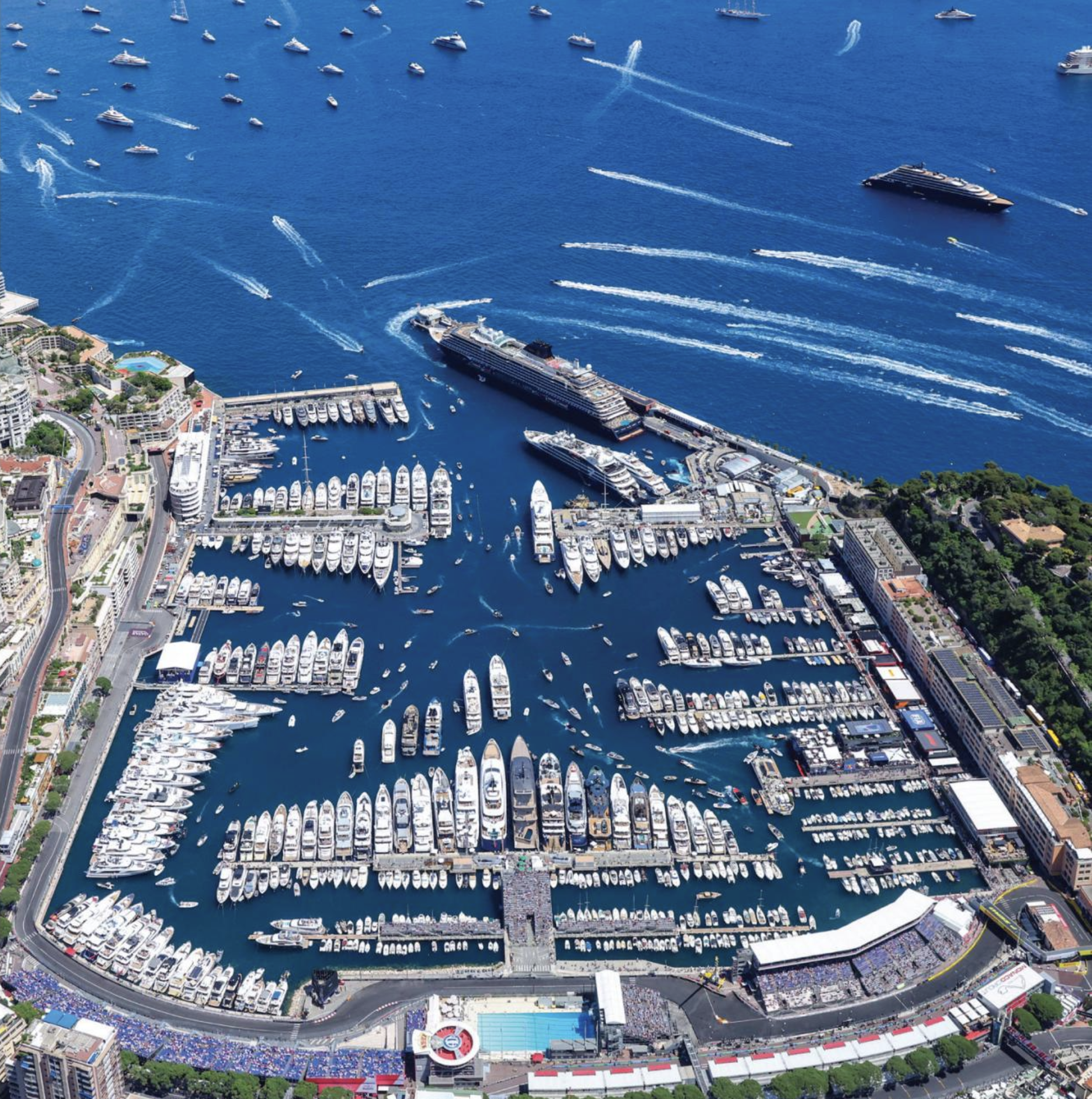Monaco Grand Prix 2025

A spectacular venue for one of the world’s premier races.
MONACO! THE NAME CONJURES UP SO MANY IMAGES – luxury, yachting, glamour, gambling, James Bond, Princess Grace and, of course, for the car and racing fans around the globe, arguably the most elegant and alluring of all of the world’s automotive racetracks (a grand prix circuit since 1929), with a course that’s completely comprised of the city’s streets. The Monaco circuit joined the nascent Formula 1 program in 1950 and has held the world’s attention ever since.
To fully set the stage when discussing this famous race, Monaco is a principality (closely aligned with France) and covers only about 515 acres.
Put another way, Monaco is substantially smaller than New York City’s Central Park, which is almost 850 acres. Its capital, Monte Carlo, has a name with even more of a cachet than Monaco (if that’s possible), since that’s the name of one of the most famous gambling casinos. Interestingly, even though Monaco is so small, Monte Carlo is but one of four distinct districts of Monaco and about 70 acres in size.
The grand prix (“grand prize”) of Monaco started with cars designed mostly for street use (for well-heeled car enthusiasts) about 100 years ago. Today, Formula 1 races are for purpose-built high-speed and higher-tech machines to vie for supremacy. Each F1 team today, with their incredible support networks, now includes dozens (sometimes hundreds) of specialists, some connected by high-speed internet connections to their home factories perhaps thousands of miles away. And lest we forget, I hasten to add that the piloti are very highly paid drivers, with salaries rumored to exceed $65 million. Fielding a Formula 1 team can run up to a rumored $150,000,000 per team (comprised of two cars and two drivers) every year. Let that sink in for a minute.
My son Jay and I were fortunate enough to attend this year’s Monaco Grand Prix — and what a trip it was! The setting is drop-dead gorgeous, where the French coast transitions into the hills of Monaco, which dramatically meet the beautiful Mediterranean Sea. Luxury yachts vie for mooring locations where they can back up mere feet from the race track, and local airports are filled with private jets. It’s one of the toniest gatherings anywhere, a location where the world’s best machines and the most proficient drivers meet in front of huge crowds; estimated to include 250,000 people for the four-day event in June of each year. Monaco’s is one of the 24 F1 races this year to see who will be crowned the “King of the Hill.”
At the Monaco Grand Prix, since the track is so narrow, qualifying laps before race day determine the starting position, which is particularly critical at this circuit; a high percentage of the race’s winners have started the race in the number one position. This year’s race was no different. McLaren’s two entries – having an absolutely spectacular Formula 1 year — started in first and third spots on the starting grid and both finished the race in the same pole positions. Formula 1 races end based on elapsed total time, which can be extended due to inclement weather, accidents, and so forth, but only up to three hours — they typically last about 90 minutes. The Monaco race lasts 78 laps, and the Monaco circuit is the shortest of Formula 1 tracks at a little over two miles, and, due to the narrowness of the track and the number of turns, it’s also the slowest (typically 95 to 100 miles per hour). The first ten finishers are awarded points based on the order that their cars pass the start / finish line after the first car has completed the race. Therefore, especially in Monaco, the determining factors of who is the winner are qualifying position (based on how quickly they drive during the prior day’s qualifying sessions), how fast they handle pit stops, whether they are able to pass other cars, and if they can avoid having an accident or a mechanical breakdown.

Depending on the circuit and the weather, cars must change tires at least once every race and must use at least two of what typically are three types of tires (soft, medium, and hard) plus sometimes rain tires. Part of the strategy is determining what tire to use and when since – all things equal – the soft tires can provide higher cornering speeds but wear out faster. Also, while it might provide some speed advance to change tires several times, especially as the weather changes, pit stops eat up precious time, though they now are down to an exact science (a Ferrari driver’s 2.0 second tire change was this year’s fastest pit stop in Monaco). At this year’s race, the finishing position was determined by mere seconds — the winner, Lando Norris of Team McLaren, won in just over one hour and forty minutes; second place, Charles LeClerc of Team Ferrari, was about three seconds behind him; and third place, Oscar Piastri of Team McLaren, about three seconds behind him.
It is fitting that the other story in this month’s magazine is about the McLaren 750S, which pretty much is a race car for the street. So as you will see, what was learned on the track informs a lot of what will show up on the road. Luckily for me, both the Monaco trip and the McLaren loan were complete winners.


Sorry, the comment form is closed at this time.